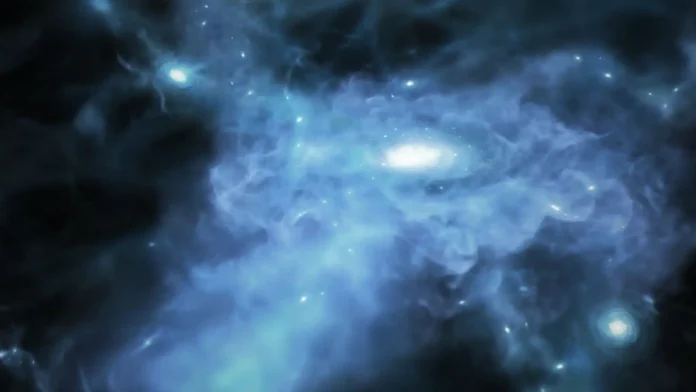
Groundbreaking Observation of Galaxy Formation
For the first time, scientists have witnessed the formation of the earliest galaxies in our universe using the James Webb Telescope. These three galaxies were born 13.3 to 13.4 billion years ago during the early stages of the universe. To put this in perspective, our universe is currently 13.8 billion years old.
Direct Observation of Nascent Galaxies
Danish researchers observed large quantities of gas accumulating around small, forming galaxies. While many theories and computer simulations about galaxy formation exist, this is the first time such a phenomenon has been directly observed with such clarity. These findings enable scientists to compare their models with actual young galaxies, thereby refining their simulations.
“These are the first direct images of the formation of the very first galaxies,” said Assistant Professor Kasper Elm Heintz from the Niels Bohr Institute. “Thanks to the James Webb Telescope, we have observed galaxies at various stages of evolution, but now we are witnessing the birth of the very first galaxies.” According to the researchers, these three galaxies emerged 400 to 600 million years after the Big Bang.
Infrared Capabilities Unveil Gas Clouds
The James Webb Telescope’s infrared capabilities allow scientists to peer deeper into the universe. Infrared radiation can penetrate dust clouds, which block visible light. Moreover, light from distant objects shifts into the infrared spectrum—a phenomenon known as redshift—that James Webb can detect. Infrared radiation is also ideal for spotting cooler objects. In this case, researchers observed cold, neutral gas clouds—the building blocks of the first galaxies—around the forming galaxies. They specifically examined how light from these galaxies was absorbed by the neutral gas in their vicinity. This transition is known as the Lyman-alpha transition.
Potential for Deeper Discoveries
The research team hopes these discoveries will lead to further revelations. “We might be able to look back even further,” said PhD student Simone Vejlgaard from the Niels Bohr Institute. “One of the biggest existential questions is: where do we come from? Discoveries like these help us understand how the first structures in the universe formed, allowing us to piece the puzzle together,” added Assistant Professor Gabriel Brammer.











